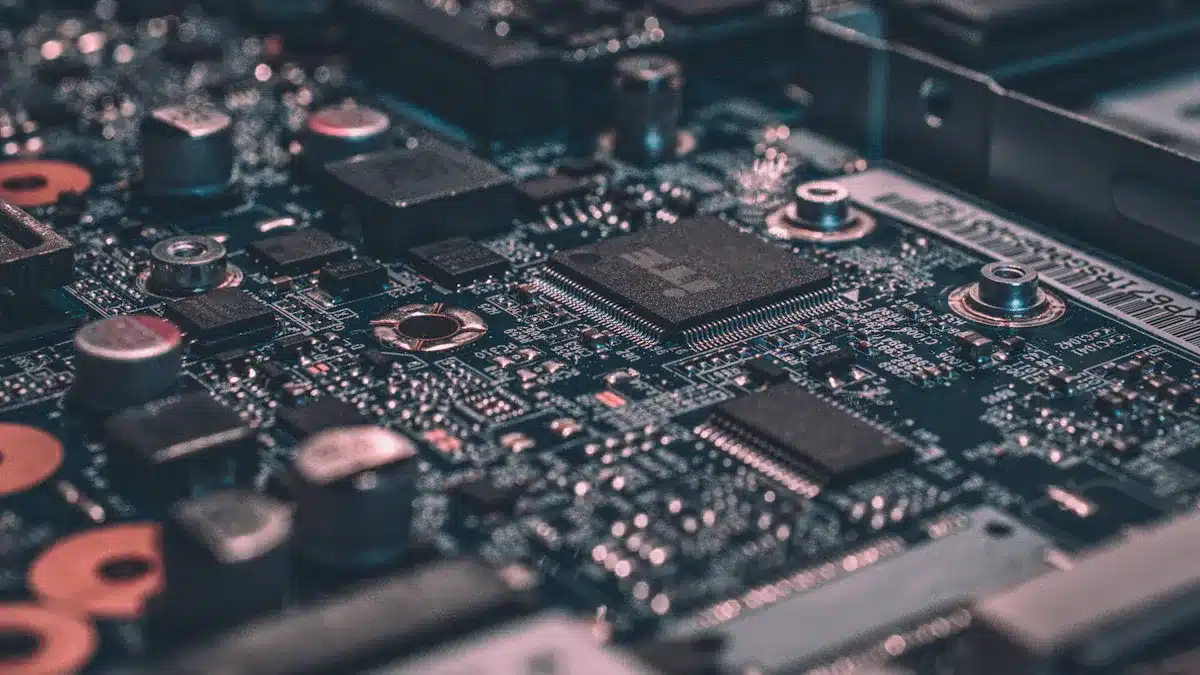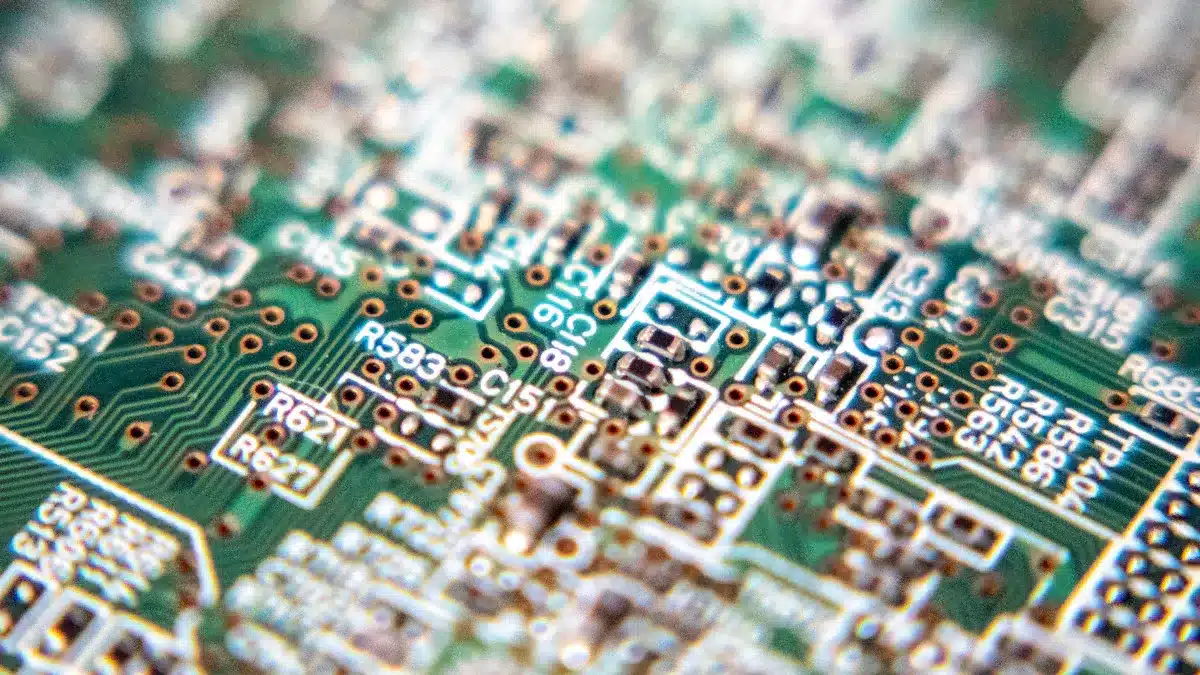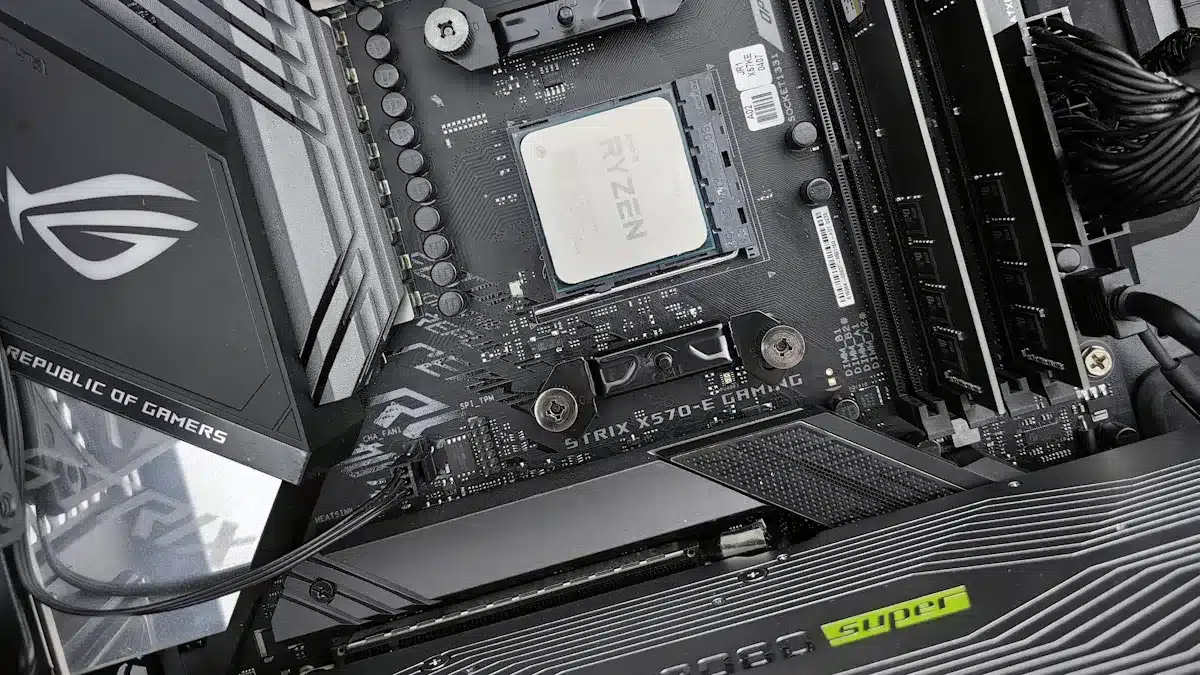
Printed circuit boards (PCBs) are very important in today’s electronics, especially in the realm of pcb circuit design. Many people are using them more and more. The global PCB market was worth $67.9 billion in 2023 and is expected to grow to $92.4 billion by 2029. This growth is due to many reasons, including the increase in consumer electronics, IoT devices, and new 5G technology. Knowing the benefits of pcbs and their applications in pcb circuit configurations is important for you. This knowledge can help you choose the best circuit options for your projects.
Key Takeaways
PCBs are very important in today’s electronics. They provide reliability and efficiency for many uses.
Making PCBs in large amounts lowers costs a lot. This makes them a smart choice for manufacturers.
PCBs work well in high-frequency uses. They help devices like smartphones and satellites send clear signals.
PCBs are strong and can handle tough environments. This gives them a longer life than regular wiring methods.
Using PCBs allows for more design options. This helps create smaller and better electronic devices.
PCB and Circuit Types

What is a PCB?
A printed circuit board (PCB) is a flat board made from materials that do not conduct electricity. It has pathways that connect different electronic parts. You can find PCBs in almost every electronic device, like smartphones and computers. The design of a PCB helps with electrical connections and support for the parts.
PCBs come in different types, such as single-sided, double-sided, and multi-layered designs. Each type is used for different reasons based on how complex it is and what it is used for. For example, multi-layered PCBs can hold more parts in a smaller area. This makes them great for advanced electronics.
Other Circuit Types Overview
While PCBs are the most common in electronics, there are other types of circuits. Here’s a quick look at some common alternatives:
Alternative Circuit Type | Description |
|---|---|
Wire Wrap | A way to connect parts using wire. |
Point-to-Point Construction | Connecting parts directly without a board. |
Breadboards | A platform you can reuse for testing circuits. |
Each of these alternatives has its own features. For example, breadboards let you change things easily while testing. But they are not as strong or compact as PCBs.
To show the differences between PCBs and breadboards, look at this table:
Feature | Printed Circuit Boards (PCBs) | Breadboards |
|---|---|---|
Structure | More complex with many layers | Simple with distribution buses |
Function | Connects and supports circuits both mechanically and electrically | Only supports parts mechanically |
Use Case | Used for final products, needs design and making | Used for testing and trying out circuits |
Current Capacity | Can carry more current | Can carry less current, connected by wires |
Knowing these differences helps you pick the right circuit type for your project. Whether you want the reliability of a PCB or the flexibility of a breadboard, understanding your choices is important.
PCB Circuit Functionality
Performance in High Frequencies
PCBs work really well in high-frequency uses. This makes them very important in many areas. You can find high-frequency printed circuit boards in things like wireless communications, radar systems, and satellites. These uses need clear signal transmission to work properly.
To get the best performance, PCB design needs to think about several things. You should pay attention to material choice, layer arrangement, trace width and spacing, and grounding. Each of these parts is very important for keeping the signal strong. For example, using good quality printed circuit board materials can help reduce signal loss.
Here are some key points about how PCBs perform in high-frequency situations:
High-frequency PCBs are key in wireless communications.
They are important for radar systems.
Used in satellites for clear signal transmission.
Important in medical electronics to reduce signal loss.
Reliability of PCB Circuits
Reliability is another big benefit of PCBs. They give steady electrical performance over time, which is very important for many uses. Unlike old wiring methods, PCBs can manage high currents without big voltage changes. This ability lowers the chance of signal problems, especially at high data speeds.
But, you should know that high currents can cause issues. In tight designs, copper signal paths might lose strength, leading to signal problems. To fix this, careful material choice and design improvements are needed.
Cost-Effectiveness of PCBs
Mass Production Efficiency
When making printed circuit boards (PCBs), mass production is a big plus. Making PCBs in large amounts cuts costs a lot. This happens for several reasons:
Economies of Scale: When you make more, the cost per unit goes down. You save money when you order more.
Streamlined Processes: PCB making uses machines that speed things up and lower labor costs. This helps reduce mistakes and improves quality.
Material Optimization: Manufacturers can get better prices for buying materials in bulk, like FR4, which is often used in PCB assembly.
To show the differences between mass production and prototype assembly, look at this table:
Aspect | Mass Production | Prototype Assembly |
|---|---|---|
Cost | Usually lower because of scale | Usually higher because of small runs |
Lead Time | Longer because of larger amounts | Shorter because of smaller amounts |
Design | More complex for commercial use | Less complex for testing |
Testing | More thorough for quality checks | Less thorough for validation |
Quantity | Large amounts made | Small amounts made |
Quality | Higher quality because of efficiency | Lower quality because of inefficiency |
Materials | More expensive materials used | Less expensive materials used |
This comparison shows that while mass production may take longer to start, it leads to better quality and lower costs per unit.
Cost Comparison with Other Methods
Besides mass production efficiency, PCBs save money over time compared to other circuit types. Here are some important points:
Reduced Assembly Costs: Rigid-flex PCBs cut out the need for many connectors and cables, making assembly easier. This saves you time and money.
Fewer Parts Required: Using flex areas for circuits means you need fewer parts. Fewer parts mean lower costs and less chance of problems.
Simplified Production Processes: With fewer connections, making the product is easier. This means lower labor costs and faster production times.
Increased Reliability: Rigid-flex PCBs have fewer connection points, making them last longer. This reliability means you need fewer replacements and repairs.
Faster Testing: You only need one test run for rigid-flex PCBs, unlike multiple tests for rigid PCBs. This saves time and resources.
Aesthetic Appeal: Rigid-flex designs can look better, which matters for consumer electronics. A nicer look can lead to more sales.
The following table sums up the long-term cost savings from using PCBs:
Cost Savings Aspect | Description |
|---|---|
Reduced Assembly Costs | Rigid-flex PCBs cut out the need for many connectors and cables, making assembly easier. |
Fewer Parts Required | Using flex areas for circuits means you need fewer parts. |
Simplified Production Processes | Fewer connections make the manufacturing process easier. |
Increased Reliability | Rigid-flex PCBs have fewer connection points, making them last longer. |
Faster Testing | You only need one test run for rigid-flex PCBs, unlike multiple for rigid PCBs. |
Aesthetic Appeal | Rigid-flex designs can look better, which is important for consumer electronics. |
By choosing PCBs, you not only save money right away but also gain long-term benefits that improve your projects’ efficiency and reliability.
Durability of PCBs

Environmental Resistance
PCBs are very strong against different environmental factors. This strength makes them good for many uses. Here are some important features that show how well they resist the environment:
Property | Description |
|---|---|
Moisture Absorption | Most PCB materials take in moisture between 0.01% and 0.20%. This can change electrical and thermal properties. |
Thermal Conductivity (k) | Thermal conductivity shows how well a PCB moves heat. This is important to stop overheating. |
Glass Transition Temperature (Tg) | This temperature shows when a PCB material starts to soften. A higher Tg means better performance in heat. |
PCBs can fail in the environment due to several reasons, such as:
Foreign objects getting in
Moisture
Dust
Power surges
Heat exposure
Vibrations, especially in crowded boards
These issues can harm the circuit board. However, PCBs are built to handle these problems better than old wiring methods.
Lifespan of PCB Materials
The lifespan of printed circuit board materials is another big plus. Under the best conditions, PCBs can last between 50 to 70 years. When used regularly, they usually last 15 to 20 years. This long life comes from several reasons:
High Tg (Glass Transition Temperature): Materials with a high Tg do not change shape in hot places. This is important for uses that have high temperatures for a long time.
Low CTE (Coefficient of Thermal Expansion): A low CTE helps reduce stress on parts and solder joints when temperatures change. This lowers the chance of cracks or failures.
Thermal Conductivity: Good thermal conductivity helps move heat away well. This stops hotspots that can hurt parts over time.
In comparison, old wiring methods often do not last as long. They can break down faster because of environmental exposure and physical stress.
To show the differences in lifespan, think about these points:
Oxidation: High temperatures can speed up the oxidation of copper traces, causing more resistance and possible failure.
Polymer Degradation: The epoxy resin in the substrate can break down from heat, losing strength and insulation.
Intermetallic Growth: High temperatures can cause intermetallic compounds to grow at solder joints, which can lead to brittle breaks.
Thermal aging tests often happen in controlled settings. These tests mimic real-life conditions, making sure that PCBs can handle different stresses over time.
By choosing PCBs, you choose a strong solution that can face environmental challenges and last for many years. This durability not only makes your projects more reliable but also cuts down on the need for frequent replacements.
Versatility of PCB Applications
Applications of PCB Circuits
Printed circuit boards (PCBs) are very important in many industries. Their flexibility lets you find them in many uses, such as:
Consumer Electronics: PCBs are key in smartphones, laptops, home gadgets, and entertainment systems. They improve user experience by making designs smaller and more efficient.
Medical Devices: In devices for diagnosis and treatment, PCBs provide reliability and cleanliness. They are crucial in health monitors and implants, where performance matters a lot.
Industrial Equipment: PCBs are found in machines at production and distribution centers. Their strength helps them handle tough conditions, making them great for industrial uses.
Aerospace and Defense: PCBs are essential in planes and satellites. Their light weight and space-saving features make them fit for these challenging environments.
Automotive Industry: In cars, PCBs control complex electronics while handling temperature changes and vibrations.
The flexibility of PCBs allows for creative design options. They can bend and flex without losing their performance, making them ideal for small devices. This adaptability leads to high-density packaging, which fits more parts into smaller areas.
Limitations of Traditional Wiring
Traditional wiring methods have many limits compared to PCBs. Here’s a quick comparison:
Aspect | Traditional Wiring Methods | Printed Circuit Boards (PCBs) |
|---|---|---|
Structure | Simpler design with basic connections | Complex multi-layered design |
Complexity | Less complex, good for simple circuits | More complex, supports advanced designs |
Performance | Limited performance, easy to interfere with | Better performance, supports high speeds and frequencies |
Manufacturing Process | Simple printing method | Involves etching, drilling, and layering |
Cost | Cheaper due to simpler design | Higher costs because of advanced features and complexity |
Traditional wiring often does not have the strength and efficiency of PCBs. You might face problems like bigger size, more weight, and more interference. These issues can hurt performance in today’s electronic designs. By choosing PCBs, you get a reliable and efficient solution that meets the needs of modern technology.
Future of PCB Technology
Innovations in Printed Circuit Board Materials
The future of printed circuit boards (PCBs) looks bright, especially with new materials. Modern PCBs are getting smaller and more accurate. They use microvias and stacked copper layers, which allow for complex circuits in small designs. The move from through-hole parts to surface mount technology helps fit more components closely together.
New materials like polyimide, ceramic, and metal core PCBs are taking the place of old FR4 materials. These materials improve heat management, flexibility, and strength, which are important for high-performance uses. For example, flexible PCBs are key in gadgets like smartphones and smartwatches because they are small and light. Rigid-flex PCBs are also becoming popular in tough areas like aerospace and automotive, where they must handle extreme conditions while performing well.
PCB vs Motherboard: A Comparative Look
When you compare PCBs and motherboards, you will see some main differences. A motherboard connects all major parts of a system, while a regular circuit board is made for one job. Here’s a quick comparison:
Feature | Printed Circuit Boards (PCBs) | Motherboards |
|---|---|---|
Definition | General circuit boards used in many devices | Specific type of PCB that connects all major parts |
Customization | Very customizable for specific jobs | Standard design for compatibility |
Size | Usually smaller, multiple can fit in one device | Bigger, single unit in a device |
Functionality | Can do specific tasks, not central | Central hub for communication and integration of parts |
All motherboards are PCBs, but not all PCBs are motherboards. Motherboards act as the main hub for communication in a device. As PCB technology improves, you can expect to see more integration and new ideas in motherboard designs. This change will likely include flexible printed circuit boards, biodegradable options, and even 3D printed circuit boards. These advancements will boost performance and sustainability in the electronics world.
In conclusion, printed circuit boards (PCBs) have many benefits compared to older circuit types. They are small and light, which helps create smaller devices. Their lower production costs make them great for making many at once. PCBs help new ideas grow by allowing quick testing, which is important for technologies like AI and IoT. They also cut down on electrical noise, which makes devices work better and last longer. Plus, PCBs make it easier to put together and fix devices, so manufacturers like using them. When you plan your next project, think about these PCB benefits. They can really affect your design choices and help your product succeed.
FAQ
What is the main difference between a PCB and a motherboard?
A PCB is a general circuit board found in many devices. A motherboard is a special type of PCB that connects all the main parts of a computer or electronic device.
Can I use a PCB for high-frequency applications?
Yes, PCBs work well for high-frequency uses. Their design helps reduce signal loss, making them great for wireless communications and fast technologies.
How do PCBs compare to traditional wiring methods?
PCBs perform better, are more reliable, and take up less space than traditional wiring methods. They lower interference and allow for more complex designs in smaller areas.
Are PCBs more cost-effective than other circuit types?
Yes, PCBs are usually more cost-effective, especially when made in large amounts. They need fewer parts and make assembly easier, which lowers overall costs.
What materials are commonly used in PCB manufacturing?
Common materials are FR4, polyimide, and metal core substrates. These materials improve durability, heat management, and flexibility in PCB designs.
See Also
The Role and Advantages of PCBA in Today’s Electronics
Pros and Cons of Flex PCBA in Current Electronics
Comparing PCBWay with Other PCB Manufacturers: An Overview